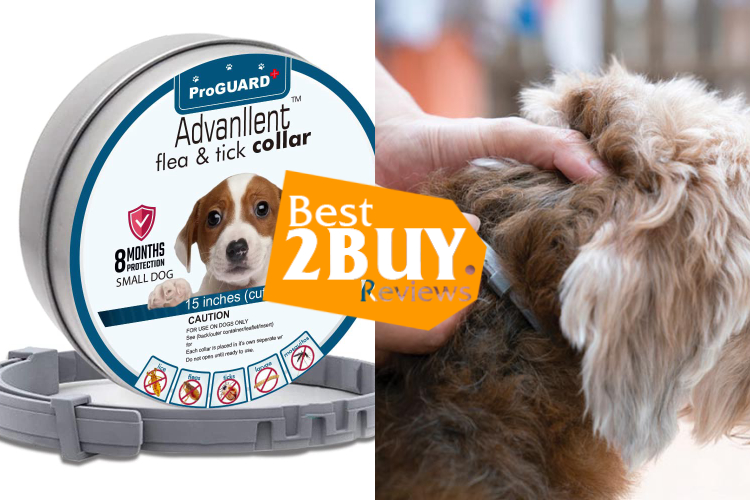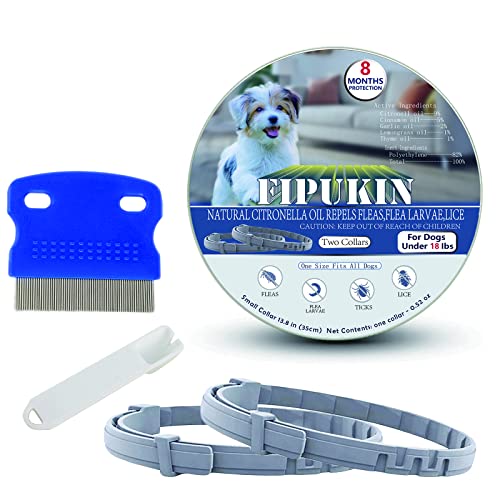How to Choose the Dog Flea Collars
Dog Flea Collars: Everything You Need To Know

- 1. Dog Flea Collars: Everything You Need To Know
- 1.1. The Basics of Dog Flea Collars
- 1.2. How Do Flea Collars Work?
- 1.3. Advantages Of Dog Flea Collars
- 1.4. Choosing the Right Flea Collar
- 1.4.1. Active Ingredients
- 1.4.2. Duration of Protection
- 1.4.3. Size and Fit
- 1.4.4. Allergies and Sensitivities
- 1.5. Is it safe for all dogs to wear flea collars?
- 1.6. Is there a risk of chemical exposure to my home and family?
- 1.7. Conclusion
Flea collars for dogs play a crucial role in the fight against fleas and ticks, offering a convenient and efficient means of safeguarding your four-legged companion from these troublesome pests. Beyond causing discomfort, fleas can transmit diseases and lead to a home infestation. This article delves into the advantages of utilizing dog flea collars, their mechanisms, and guidelines for selecting the most suitable one for your pet.
The Basics of Dog Flea Collars
Flea collars for dogs are crafted to deter, eliminate, or control the growth of fleas and ticks on your canine companion. These collars generally incorporate active ingredients that are slowly dispensed onto your dog's skin and fur, ensuring extended protection. The main objective is to establish a safeguarding barrier that effectively wards off fleas and ticks from your dog.
How Do Flea Collars Work?
Traditional collar designs typically release toxins in the form of gas, limiting their effectiveness to fleas in close proximity. In contrast, modern collars incorporate continuous release of flea and tick repellent chemicals. These substances are dispersed over the pet through natural oils in the hair, coat, and skin. The active ingredients in these collars adhere to the hair and skin, providing ongoing protection.
There is a variety of flea collars for dogs with varying levels of effectiveness. Older models may contain organophosphates, which can lead to toxic reactions in dogs, cats, and potentially humans with prolonged exposure. Although Permethrin collars are cost-effective, they pose significant risks to cats. More recent and advanced collar designs are generally safer and more efficient. However, caution is still warranted, as any flea collar can be problematic if pets in the household lick or chew on each other's collars.
Advantages Of Dog Flea Collars
Dog flea collars are one of the many options available for controlling and preventing fleas on dogs. While their effectiveness can vary, they do offer several advantages:
- Long-lasting protection: Many flea collars provide protection for an extended period, often several months. This can be more convenient than other forms of flea control that require more frequent application.
- Ease of use: Using a flea collar is a simple and straightforward process. You just need to attach it around your dog's neck, and it will start working to repel or kill fleas.
- Affordability: Flea collars are often more cost-effective than some other flea control methods. They provide a longer duration of protection for a relatively lower cost.
- Continuous protection: Once fitted, the collar continues to work continuously, offering protection against fleas without the need for frequent reapplication.
- Minimal mess: Unlike some topical flea treatments, flea collars don't involve applying liquids or creams to your dog's fur. This can be particularly beneficial for dogs that may not tolerate topical treatments well.
- Targeted action: Flea collars typically work by releasing active ingredients that are absorbed into the dog's skin and coat. This targeted approach helps focus the treatment where it's needed most.
- Reduced risk of side effects: Some dogs may be sensitive to certain flea control products, experiencing skin irritation or other side effects. Flea collars generally have a lower risk of causing adverse reactions in comparison to some topical treatments.
Choosing the Right Flea Collar
When selecting a flea collar for your dog, consider the following factors:
Active Ingredients
The primary and most crucial factor to take into account when selecting a flea collar is the presence of active ingredients. Since various regions may harbor different types of parasites, it is crucial to opt for a collar that contains ingredients capable of effectively combating the specific pests prevalent in your area. It is advisable to seek guidance from your veterinarian to identify the most appropriate option based on your dog's health and lifestyle. Active ingredients such as imidacloprid, flumethrin, and deltamethrin are commonly used, each designed to target specific parasites.
Duration of Protection
The effectiveness of flea collars differs in terms of the duration they provide protection. Certain collars safeguard against fleas for only a short span, whereas others claim extended protection that lasts for several months. It's essential to take into account your dog's outdoor habits and overall lifestyle when choosing a flea collar. If your dog frequently engages in outdoor activities or is susceptible to infestations, opting for a longer-lasting collar may be more appropriate. Conversely, if your dog primarily lives an indoor-oriented lifestyle, a collar with a shorter duration might be sufficient.
Size and Fit
Ensuring the correct dimensions and fit of the flea collar is essential for both its efficacy and your dog's well-being. The collar should be appropriately snug, allowing space for two fingers to fit comfortably between the collar and your dog's neck. A collar that is overly tight may cause discomfort and skin irritation, while one that is too loose might be less effective. Trim any extra length to avoid the risk of your dog chewing on the collar, which could result in the ingestion of potentially harmful chemicals.
Allergies and Sensitivities
Similar to humans, dogs may experience allergies or sensitivities to specific chemicals. Be vigilant about your dog's response when introducing a new flea collar. If you observe any signs of irritation, such as itching, redness, or excessive scratching, seek prompt advice from your veterinarian. They can assess whether your dog is undergoing an allergic reaction and suggest alternative products that are milder on your pet's skin.
Is it safe for all dogs to wear flea collars?
Flea and tick collars may not be appropriate for senior dogs, pregnant or nursing females, or very young puppies. It is essential to seek advice from your veterinarian or one of our Animal Health Advisors before administering any parasite treatment to your pet. This ensures that your dog receives a treatment that is both suitable and safe for their specific condition. Prior to usage, always thoroughly read the datasheet to confirm that the product is suitable for the particular animal you plan to treat.
Is there a risk of chemical exposure to my home and family?
The concentrated active chemicals in the flea collar are present primarily on the collar, posing a risk of transfer to various surfaces, including small children, other pets, and your home environment. It is crucial to practice thorough handwashing after handling your dog each time. If your animals or children regularly engage in close interactions, explore alternative flea treatment options that might be better suited for your household.
Conclusion
Choosing the right flea collar for your dog is vital in preventing and managing flea and tick infestations. Factors such as active ingredients, duration of protection, size, and your dog's individual needs should be thoughtfully considered. Regular veterinary check-ups are crucial to ensure your dog stays healthy and flea-free, allowing both you and your furry companion to enjoy a happy, itch-free life together.










